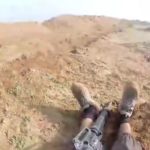Without pictures, it didn’t happen. Unless you bring back a t-shirt, you didn’t go. And without skill and progress measurement, you can’t improve.
One way to exercise your skills and measure your progress is to practice with a structured course of fire. A good routine will “walk you through” a variety of skills like strong hand only, support hand only, two-handed shooting, draws from a holster, and magazine changes. While the shooting community has developed hundreds of such practice scenarios, you don’t have to look any farther than your local law enforcement agency to find one. While every agency differs in the details, most have a structured qualification course of fire that every officer has to complete on a regular basis.
Are law enforcement qualifications designed to create Master Class shooters? No. Shooting skills represent a small percentage of the overall job requirements of police and law enforcement officers, so most qualifications, even those used by the Federal Bureau of Investigation, are relatively easy to pass once you figure out the basics. What these qualifications do well is provide a standardized practice, testing, and measurement methodology that allows both comparison against a known and stable standard and the ability to measure performance improvement (or degradation!) over time. It’s also not a bad thing to have in your back pocket in the event you’re ever involved in a self-defense encounter. Being able to tell the court something like “I take my responsibility to carry a gun very seriously. That’s why I train to the same, or greater, standards than the law enforcement officers in this room,” is probably not a bad thing.
by Tom McHale



